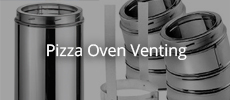X
-
The high temperature silicon is ok (just) for where the outer shell meets the pipe, but lower down on the flue gallery it is too hot. For the expansion issue I don't use an anchor plate at all, but prefer a slightly loose fit. where the pipe seats into the casting. This does have the advantage of being able to make the cast much thinner and lighter.
- Likes 2
-
Thanks! In that case I can redesign my cast to be bigger so that I have an 1 inch on the left & right and 1.5 inches on front & back to avoid having to cut down.Originally posted by david s View Post
With regards to expansion, is it possible to fit some firm material around the edge of the plate. This would let it set in the cast and give it a bit of room to expand and contract?
Ok great suggestion thanks! I'll pick some up and do that.Originally posted by david s View Postbut a flexible join using high temperature silicone is needed between the render and the pipe to prevent cracking and water entry
Leave a comment:
-
Sorry! I looked at your photo again and realise you're not really waterproofing much onto the bricks. At first I thought there was a lot more on the (hot) brick, hence my question.Originally posted by Michael Thomas View Post
The FB book has a diagram on page 72 that says the insulation should reach 100F (37C) when the oven is fired so I think so?
- Likes 1
Leave a comment:
-
My view is that metal anchors close to the edge of the casting are likely to expand and crack the casting, so trimming the anchor plate down and setting it into the casting is probably a better option. This has come up before an I attach a drawing that explains a solution. If you insulate around the anchor plate and flue pipe with vermicrete then render over it the pipe will be supported higher up, but a flexible join using high temperature silicone is needed between the render and the pipe to prevent cracking and water entry.
- Likes 1
Leave a comment:
-
mongota, Gulf, and david s
I've got three questions about the chimney. I am trying to recreate a flue gallery from the Melbourne Firebrick Company to shown below and in. I'm planning to use refractory cast and I am building my form. I would like the chimney anchor plate to be set into the refractory. I plan to have an expandable joint to allow for chimney expansion.
1) If the plate is set into the cast, how close can the metal anchor be to the edges of the concrete?
2) If the plate is set into the cast an inch below the surface, how much anchor do I need? I'm wondering about (I'd like to cut the anchor plate to fit my design but don't want to remove too much anchor). Please see "? marks" indicated on photo for the distance
Last edited by UtahBeehiver; 11-08-2020, 10:14 AM. Reason: Removed direct video link to commercial link
Leave a comment:
-
The FB book has a diagram on page 72 that says the insulation should reach 100F (37C) when the oven is fired so I think so?Originally posted by MarkJerling View Post
Aha, thanks! Looks like good stuff. Will it handle the heat?
- Likes 1
Leave a comment:
-
Aha, thanks! Looks like good stuff. Will it handle the heat?Originally posted by Michael Thomas View Post
It's a elastomericsealant, acting as a flexible barrier to prevent water from soaking into the insulating brick (and ceramic board). There were a lot of weird edges and contours so I chose this over a stiff barrier.
Additional details: It's almost a better-than-nothing solution as water is going to find its way in through the concrete hearth somehow. However, by putting this barrier here I will cover a large area that would otherwise have the potential to soak up water coming through the tiles/finishing stone, which is significant source of water I think.
Product details:
https://www.homedepot.ca/product/cus...lon/1000150306
- Likes 1
Leave a comment:
-
It's a elastomericsealant, acting as a flexible barrier to prevent water from soaking into the insulating brick (and ceramic board). There were a lot of weird edges and contours so I chose this over a stiff barrier.Originally posted by MarkJerling View Post
Looking good. What's the "red guard" product?
Additional details: It's almost a better-than-nothing solution as water is going to find its way in through the concrete hearth somehow. However, by putting this barrier here I will cover a large area that would otherwise have the potential to soak up water coming through the tiles/finishing stone, which is significant source of water I think.
Product details:
Leave a comment:
-
Looking good. What's the "red guard" product?Originally posted by Michael Thomas View Post
Thanks guys! I'm nearly finished the front arch as well; bricks cut. I thought I'd post a shot of the red guard I used to cover the insulating brick and the ceramic fiber board in case anyone was interested. Since its getting cold overnight, I've been putting a 100W bulb in the dome and covering with 2 layers of plastic and a blanket for the really cold nights (e.g. -1C)
Leave a comment:
-
Originally posted by Gulf View PostYes it wil be just fine imo. 1 brick or three, you just have to complete it Originally posted by MarkJerling View PostThat will work just fine. I did almost exactly the same thing with mine.
Originally posted by MarkJerling View PostThat will work just fine. I did almost exactly the same thing with mine.
Thanks guys! I'm nearly finished the front arch as well; bricks cut. I thought I'd post a shot of the red guard (edit: for waterproofing) I used to cover the insulating brick and the ceramic fiber board in case anyone was interested. Since its getting cold overnight, I've been putting a 100W bulb in the dome and covering with 2 layers of plastic and a blanket for the really cold nights (e.g. -1C)
Last edited by Michael Thomas; 11-06-2020, 01:27 AM.
- Likes 1
Leave a comment:
-
That will work just fine. I did almost exactly the same thing with mine.Originally posted by Michael Thomas View PostWork was pretty busy last week and rained a good bit so I didn't get at the oven much.
But here I am after a few hours work today and hoping to put in the plug before it rains tomorrow. Is it possible to have a plug made of three bricks as shown in the sketch. I don't really care that much if it looks silly; it will be winter soon and all i want for Christmas is this oven.
Mike
Leave a comment:
-
Yes it wil be just fine imo. 1 brick or three, you just have to complete it
Leave a comment:
-
Work was pretty busy last week and rained a good bit so I didn't get at the oven much.
But here I am after a few hours work today and hoping to put in the plug before it rains tomorrow. Is it possible to have a plug made of three bricks as shown in the sketch. I don't really care that much if it looks silly; it will be winter soon and all i want for Christmas is this oven.
Mike
Leave a comment:
-
Excellent point Joe when transitioning from an IT to a string.
He's used the string to build the entire dome, so while his angles for each course should be consistent within each course, I do understand that each subsequent course can generate a slight bit of lippage on the interior face of the brick from the course below. As long as a builder keeps the elevation (height above the floor) of each course consistent, a builder should be able to avoid any issues when covering the arch. I see the lippage as more of an aesthetic issue, but dome droop or beaver tail, that can be a pain in the rear. lol
Leave a comment:
-
Of course if you cast, not only do you not have to worry about the”droop”, but you also don’t need an IT, brick saw or months of labour.
- Likes 3
Leave a comment:






Leave a comment: